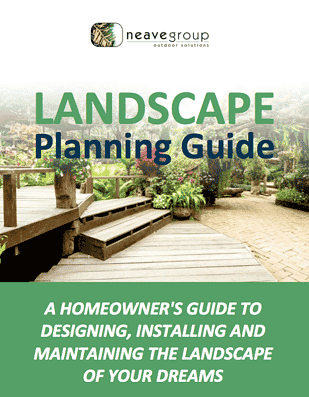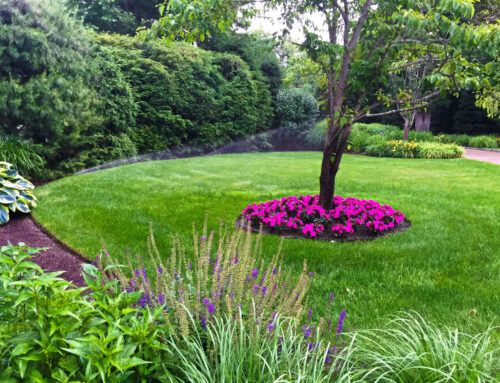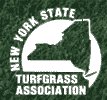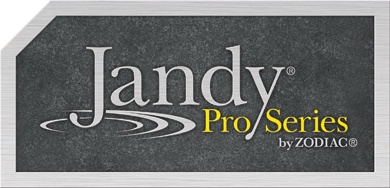The plantings around your home’s foundation are like a blooming welcome mat.
They soften that severe edge where your house meets the ground. They give your home a friendly vibe that shows you care about your property’s appearance.
The right mix of foundation plants can make or break a home’s curb appeal.
But what to plant? It can be a challenge, with so many choices.
Taking your backyard to the next level begins by contacting us here or with a simple phone call to Neave Landscaping at one of our three convenient locations:
-
In the Hudson Valley NY, area, call 845-463-0592.
-
In Westchester County NY, dial 914-271-7996.
-
In Fairfield County CT, contact us at 203-212-4800.
Why Are Foundation Plantings Important?
Foundation plantings are the plants closest to your home. Their job? Foundation plantings:
- Enhance your home
- Soften its hard edges
- Make it more welcoming
- And tie it to the surrounding landscape
Unfortunately, one common landscaping mistake homeowners make is leaving this job to a sad row of scraggly evergreens. They just can’t pull it off.
The good news? Here in the Northeast — New York and Connecticut, particularly — great options abound for pretty, hardworking foundation plants.
Your goal should be a pleasing mix of evergreens, deciduous shrubs, ornamental grasses, and perennials.
The Best Foundation Plants For Northeast Landscapes
Let’s take a look at 25 best foundation plants for Northeast landscapes. You’re bound to find a few you can’t wait to plant.
You want to be sure your foundation plants have the light they need, so we’ll group them by their lighting requirements.
We’ll start with a hefty list of plants that work in part sun/part shade — for the best flexibility around your home’s foundation — followed by full sun foundation plants and the best foundation plants for shade.
Best Foundation Plants For Part Sun/Part Shade
Carissa Holly
Hollies are great to soften the corner of a house or to flank an entrance. This compact holly has white blossoms in spring and is perfect for low hedges and as a glossy, green background for flowering perennials. It stays a tidy 3 to 4 feet tall and spreads 4 to 6 feet.
Boxwood
A foundation planting staple, boxwood is great for creating formal accents or hedging. ‘Newport Blue’ is an elegant shrub with frosty blue new growth. Korean boxwood is faster growing than typical English varieties, stays compact and low growing, reaching about 2 feet tall.
Summersweet
This is an easy-care native with oval leaves and fluffy spikes of white flowers in mid to late summer. Chose the ‘Sixteen Candles’ variety and expect butterflies and hummingbirds to visit. Bonus: yellow-orange foliage in the fall. It reaches 4 to 8 feet tall.
Knock Out Roses
If you love roses, why not showcase them out front? Knock Out offers compact pink and red roses that flower all summer and resist pests and diseases. They can be maintained as nicely shaped shrubs 3 to 4 feet tall. They prefer sun but do well in partial shade.
‘Autumn Joy’ Sedum
This is one of the best four-season perennials. It’s beautiful in full bloom, with large clusters of tiny rose-colored flowers in late summer to early fall. Leave the faded flower heads for winter interest.
Cut it back in the spring, and fleshy green leaves are quick to pop out. A moderate grower, it reaches 18 to 24 inches tall and wide.
Catmint
A great bloomer from summer through fall, catmint offers spires of fuzzy gray leaves with tiny purple-blue flowers. It looks a lot like lavender, but it’s not so finicky.
If you want a big stunner, choose the ‘Six Hills Giant’ variety, which grows 3 to 4 feet tall. ‘Walker’s Low’ is a medium-size mounder that grows 18-inches tall and works well massed.
Rhododendron
Rhododendron is a gardener’s favorite for its showy spring flowers and glossy green leaves.
They can act as the bones of a foundation planting, providing structure to the flowering specimens around them. Slow-growing, dwarf, or compact varieties are a smart choice, especially under windows.
‘Endless Summer’ Hydrangea
Hydrangea’s thick foliage and large, floppy blooms do a great job of hiding plain-Jane foundation walls. In neutral soil, expect ball-shaped, pink and lavender blossoms; in the slightly acidic soil, they’ll bloom deep blue.
‘Endless Summer’ has the unique ability to re-bloom throughout the spring and summer months, giving more color and visual appeal to your foundation area for a longer period of time.
Coreopsis
Reliable, long-blooming daisy-like yellow flowers are produced from early summer into fall. Birds and butterflies love them. They grow to 18 inches high and wide.
Shasta Daisy
Nothing says “welcome” like pretty, perky daisies. The Shasta is a classic yellow and white daisy with impressive 4-inch blooms that appear from mid-summer to early fall. They bloom in clumps from 2 to 3 feet tall and 1 to 2 feet wide.
Korean Spice Viburnum
This deciduous shrub with toothed, dark green leaves bears pink buds in late spring that open to white or pink-flushed flowers in domed clusters.
Sniff — they smell like spice cake. The plant also has pretty red foliage and berries in the fall. It grows to about 6 feet tall and wide.
Japanese Maple
Japanese maples come in a dazzling array of sizes, colors, and leaf shapes. They’re prized for their lacy, finely-cut leaves, brilliant fall color, and delicate structure. Look for a dwarf variety if you’d like it to stay to 6 to 8 feet tall.
Full Sun Foundation Plants
Threadleaf False Cypress ‘Golden Mop’
This compact yellow foliage plant offers color and year-round interest. Its yellow feathery foliage looks great against deep green shrubs and provides great texture. Bonus: it’s deer-resistant.
True Geranium
At the front of your foundation plantings, these can provide spring-to-fall color, especially if you cluster varieties with an extended bloom time.
‘Rozanne’ is one of the longest-blooming varieties, with violet petals around a white center that continues all summer. Can grow to 18 inches high and 2 feet wide.
Encore Azalea
An encore is a group of azalea hybrids that bloom in spring, then again in late summer, early fall. Plants bloom either white, pink, red, or purple and grow to a height and spread of 3 to 5 feet.
They’re great for sunny spots that would wilt traditional azaleas.
Rose Glow Barberry
This shrub is a show stopper for its stunning variegated leaves of purple, pink and rose. The more sun it gets, the more vibrant it appears.
The stunning color stands out in the landscape year-round since it doesn’t drop its leaves in cold weather.
It matures to 3 feet high with an equal spread, so it fits nicely in your foundation planting plan.
One thing to note — the barberry has sharp thorns, so beware if you have little ones who love to explore.
Gold Mound Spirea
This standout shrub is loved for its leaves. In the spring you’ll marvel at the bright golden color of the new leaves. It will make your foundation planting area shimmer.
Later, the leaves change to chartreuse, then make a stunning comeback with its yellow fall foliage edged in red. It grows 2 to 3 feet tall and spreads to about 4 feet wide.
Sargent Crabapple
This small, showy tree usually grows no more than 8 feet tall with a rounded canopy that spreads 10 feet or more. In spring, it features clusters of deep pink buds that open into fragrant, white flowers. Next up: deep red, shiny fruit that looks pretty in the fall.
Dwarf Alberta Spruce
This small evergreen is compact, reaching heights of 6 to 8 feet, and grows in a bushy, cone shape that needs little pruning. Its soft, bright green needles turn a pretty soft grayish green when mature. Bonus: it’s deer resistant. It prefers full sun but can tolerate some shade.
Blue Oat Grass
Ornamental grasses are great for foundation plantings. Graceful grasses bring texture, motion and even sound to the garden. They help tie all the other plants together.
Blue oat grass offers graceful fountains of silver-blue blades in neat ornamental clumps. Feathery beige appears June through August. It grows 2 to 3 feet tall and wide.
‘Karl Foerster’ Grass
This great grass features arching, glossy, dark green foliage 3 to 5 feet tall. In June, look for pinkish-bronze flower heads that gradually change to golden tan. Pretty year round.
Foundation Plants For Shade
Hostas
Before you yawn and mutter, “How boring,” know that there are so many types of this go-to plant, you’re bound to find a few that enchant you. Some are showy gold or beautifully variegated with white edges. Others are a deep blue or boast deeply textured leaves.
Bonus: You can divide them every two to three years. Free plants!
Viburnum
You can’t go wrong with viburnum. Attractive foliage, tidy growth habit, and most have lovely, fragrant flowers. Many also boast colorful fruit that birds love and stunning fall foliage.
There are more than 150 types, so there’s bound to be one that suits you. Look for a dwarf variety if you’d like it to stay under 3 feet.
Witch Hazel
This large shade lover produces yellow, ribbon-like flowers in late fall when no other plants are blooming, with pretty, lemon-yellow leaves.
The multi-stemmed, vase-shaped shrub likes moist, shady conditions and grows to about 15 feet tall, good to anchor foundation plantings at the corner of your house.
Goat’s Beard
An easygoing shrub with a fun name, goat’s beard brightens up shady areas with its tall, fluffy, creamy white blooms in late spring to early summer. It grows 3 to 6 feet high and can spread to 6 feet wide.
Looking For More Landscape Design Help?
From full sun foundation plants to the best foundation plants for shade and everything in between, give Neave a call. Neave Landscaping has been creating beautiful landscapes for more than 40 years. Our experts have a great handle on all kinds of growing things, including the right choices for your foundation plantings.
The professionals at Neave will visit your property and discuss your many options, including grasses, perennials, foundation landscaping, best shrubs to plant in front of house, trees, and more.
Leave the planting to us, knowing your home will look inviting and expertly landscaped.
If you’re in the Hudson Valley, call us at (845) 463-0592. If you’re in Westchester County, call (914) 271-7996; from Connecticut, dial (203) 212-4800. Or, fill out our simple web form, and we’ll contact you about setting up your free consultation.
//
Images: Boxwood, Roses, Hydrangea, Catmint, Japanese maple, Cypress, Grass, Azalea, Crabapple, Dwarf spruce, Hosta, Witch hazel
























